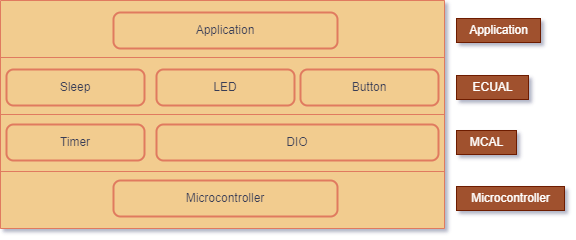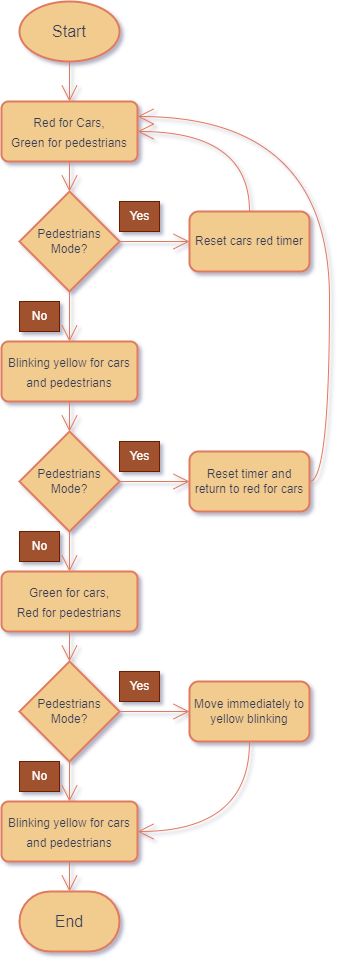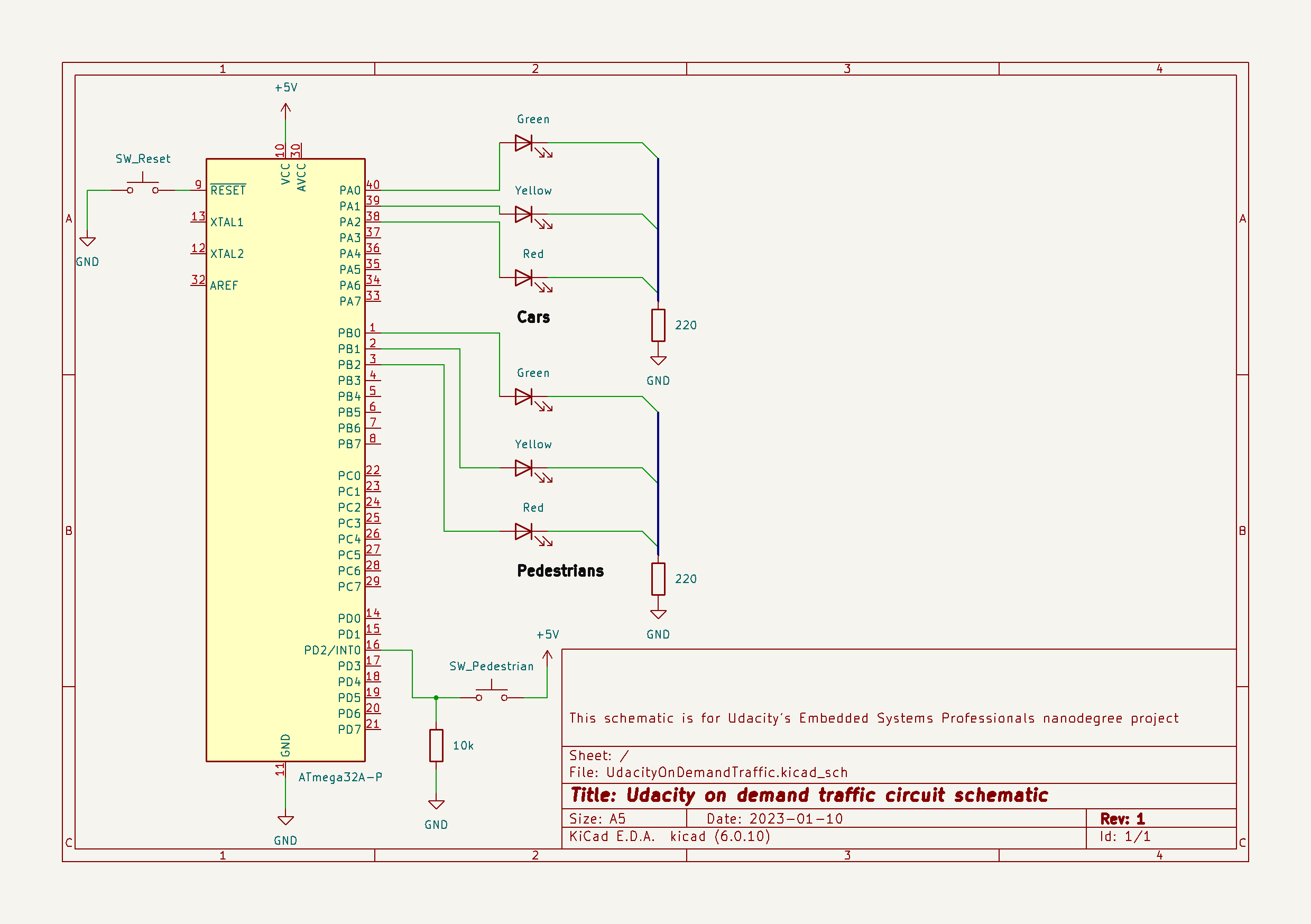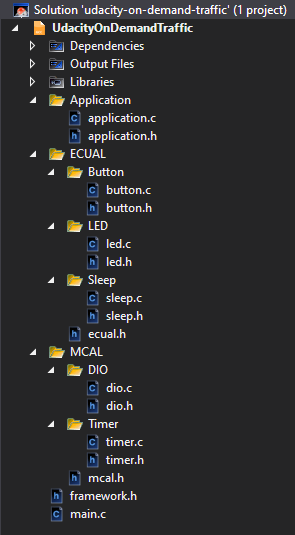udacity-on-demand-traffic
This repository contains the source tree for a project required by Udacity's Embedded Systems Professional nanodegree. This source tree shall only be used according to the terms outlined in LICENSE.
The source is built using Microchip Studio 7 (Version: 7.0.2594 - ).
View this readme as a PDF from here.
Rubric Videos
- 🎥 System Design (6:35)
- 🎥 Development Environment (4:39)
- 🎥 Application Implementation (19:11, Drivers testing starts @ 14:25)
- 🎥 Extended Driver Testing (9:14)
- 🎥 Application User Stories (4:28)
System Description
This system is a traffic control system that prioritizes pedestrians. At designated road crossings with traffic lights, pedestrians can request green light for crossing on-demand. Our system, in normal mode, moves car traffic lights from rad to yellow then green and vice versa, with the opposite happening for the pedestrians lights. Each stage lasts for five seconds, noting in yellow stage the light blinks. When the pedestrian presses a request button for crossing, the system enters pedestrian mode. In pedestrian mode, if the car lights were red or yellow moving to red, the system resets the five seconds interval. If the car lights were yellow moving to green, the system resets the interval and then moves to red for cars. If the car lights were green, the system moves immediately to yellow with five seconds blink then to red. The system returns to normal operation afterwards.
System Design
The system uses ATmega32 microcontroller as the embedded brain. We have three major layers on-top of the microcontroller: the microcontroller abstraction layer (MCAL), the electronic unit abstraction layer (ECUAL), and the application. Our MCAL has two drivers: the digital input/output driver (DIO), and the timer diver. The ECUAL has three higher-level drivers: the LED driver, the sleep driver, and the button driver. Our system embraces SOLID principles preventing higher levels from direct communication with any lower level other than the one directly below.
System Constraints
One major constraint of the current implementation is that the user can put the system into a loop between red light for cars and blinking yellow. If the user pressed the pedestrian button while the system is blinking yellow going into the green light for cars, the system will change course and return to the red light for cars. The user can do this each time the lights are yellow. This "flaw" can be mitigated by extending the pedestrian mode to cover two processing cycles so that the system doesn't register another press in this period. Other constraints include: if the user pressed the button for very short time, the system may not be able to register it by being into an ISR or couldn't sense the change in voltage. The system doesn't have specific constraints regarding long or double presses.
System Flowchart
Demo Circuit
Folder Structure
License
Refer to LICENSE



